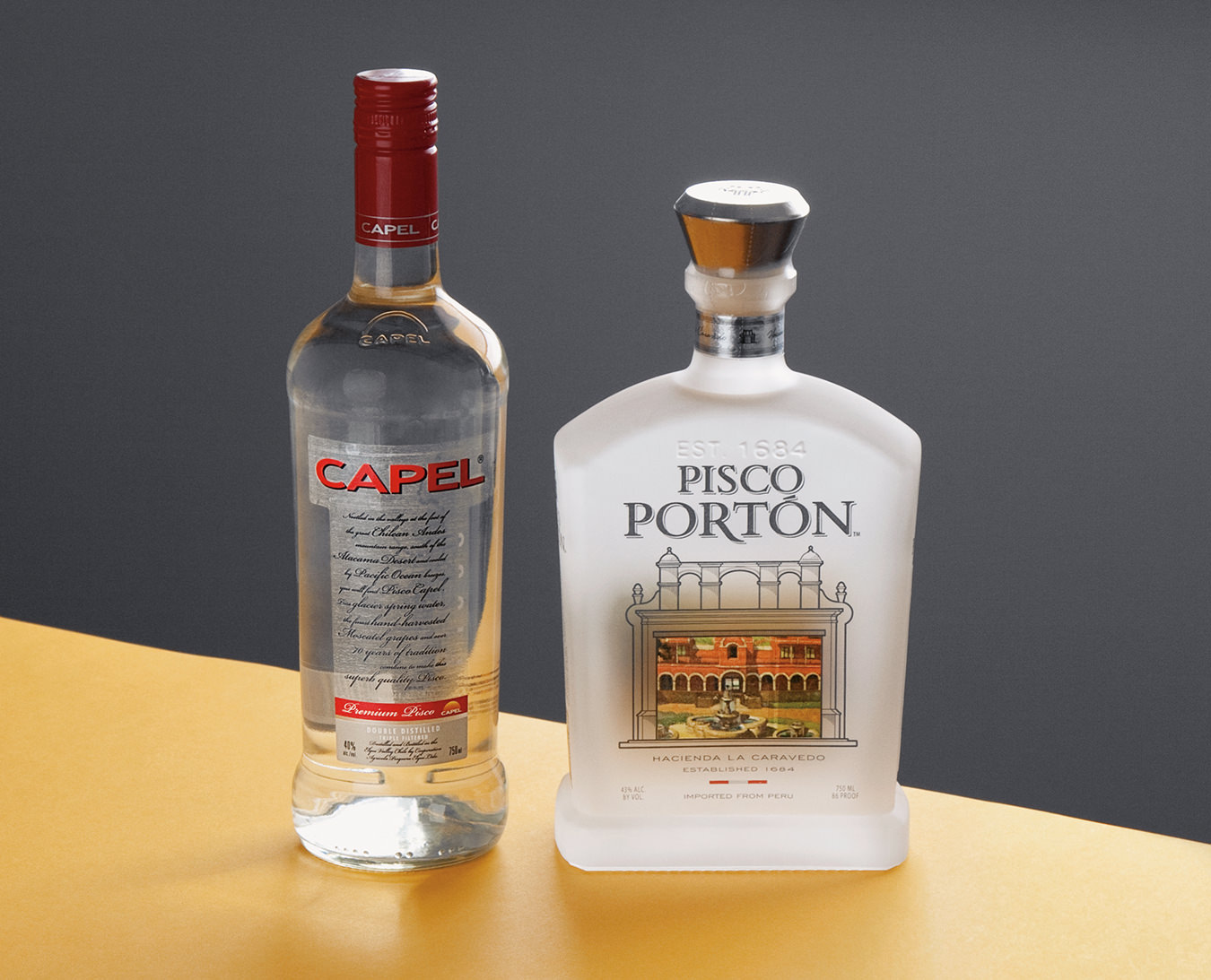-

Winter Storm, an icewine-inspired whisky, is the latest expression in the Glenfiddich Experimental Series.
-

The Glenfiddich Experimental Series is a collection of single malts designed to inspire unusual and unexpected whiskies.
-

Glenddich malt master Brian Kinsman (left) visited Peller Estates in Niagara-on-the-Lake where Craig McDonald (right), vice president of winemaking for Andrew Peller Limited, gave Kinsman a first-hand immersion on how icewine is made.
-

Brian Kinsman (left) and Craig McDonald (right) in 10 Below Peller Icewine Lounge, at Peller Estates in Niagara-on-the-Lake.
-

Winter Storm is the result of Glenfiddich Canadian brand ambassador Beth Havers (left) proposing the idea of using icewine casks to finish the Glenfiddich 21-Year-Old to malt master Brian Kinsman (right).
-

Struan Grant Ralph, global brand ambassador for Glenfiddich, sees himself as a having the role of storyteller extolling the Glenfiddich expressions.
Glenfiddich Winter Storm
An icewine-inspired whisky.
Glenfiddich is a company built on a legacy of craft and tradition, notwithstanding one that recognizes opportunity. The family-owned and -operated distillery in Speyside, Scotland, has been distilling whisky for six generations—a tradition that started with William Grant in the late 1800s. Glenfiddich is now under the eye of Brian Kinsman, who upholds 130 years of heritage, but isn’t afraid to experiment. “There are plenty of rules to Scotch whisky,” says the malt master. “We take these rules and push them as much as we can.”
Constraint can often lead to great innovation. The Scotch Whisky Association mandates that single-malt Scotch whisky must be made in Scotland from malted barley, to go alongside water and yeast, at a single distillery by batch distillation in pot stills. Even with such restrictions, Glenfiddich has found ways to innovate. “I see my role as being split between maintenance of the current
range while also exploring and being innovative,” says Kinsman.
Glenfiddich’s Experimental Series is designed to inspire unusual and unexpected whiskies.
All of which explains the rationale for Glenfiddich’s Experimental Series, designed to inspire unusual and unexpected whiskies. The distillery inaugurated the series with two releases in 2016: the IPA Experiment, a collaboration with a craft brewer that resulted in the world’s first single malt finished in India Pale Ale casks; and Project XX (pronounced “twenty”), wherein Kinsman asked brand ambassadors to select a cask that best reflected their individual taste from Glenfiddich’s stocks and then blended them together. “We want to do things that are generally a bit thought provoking, a bit teasing out of your comfort zone,” says Kinsman, a trained chemist.
Winter Storm, the latest Experimental Series expression, is the result of Canadian brand ambassador Beth Havers proposing the idea of using icewine casks. Intrigued, Kinsman travelled to Peller Estates in Niagara-on-the-Lake (the region where 90 per cent of the world’s icewine is produced). “This process has been an intellectual exchange,” says Craig McDonald, vice-president of winemaking for Andrew Peller Limited. “I didn’t just send over casks and wash my hands of it. Brian [Kinsman] visited us to understand how icewine is made.” Enduring freezing weather, Kinsman learned how frozen grapes are picked by moonlight at –10°C and how three kilograms of grapes are required to produce one 375-millilitre bottle of Peller Estates Vidal icewine.
“The joy of experimentation is you don’t know what you are capable of.”
Based on experience from previous efforts, Kinsman used an older whisky, Glenfiddich 21-Year-Old for Winter Storm. “The fact that there is so much residual sweetness [left behind in the oak by the icewine] pushed me more towards the aged whisky to cope.” To be clear, this is not an icewine-flavoured Scotch. This is Scotch that has been finished for six months in barrels that previously held icewine. “The joy of experimentation is you don’t know what you are capable of,” says Kinsman. With Winter Storm, the result is a bouquet of tropical fruit on the nose, balanced with underlying wine notes. The sweetness of the icewine is very well integrated, with a short and crisp finish. Kinsman advises adding water to taste (“You taste maximum flavour at room temperature”), but not to put ice in your whisky. “There is chemistry as to why water works. A lot of the flavour compounds are alcohol soluble, so when the alcohol by volume [ABV] is over 30 per cent, the flavours open and the solvent effect is lost when water is added.”
Struan Grant Ralph, global brand ambassador for Glenfiddich, sees himself as having the role of storyteller, “celebrating the whisky and engaging with enthusiasts around the world.” Ralph confirms the Glenfiddich commitment to releasing one experimental whisky annually for the next 10 years. Kinsman isn’t sharing any information as to what Experimental Series no. 4 may be.
There aren’t many other whisky distilleries that see the world this way—taking an unconventional approach to age-old methods and embracing new opportunities. Perhaps, then, it should not be surprising that Ralph has adapted an age-old prayer to celebrate this new release: “Our whisky, which art in glass, hallowed be thy barley. Thy will be drunk, we may be drunk (responsibly). Give us this day our daily dram and forgive us our spillages, and forgive those who spill against us. For thine is the whisky, the icewine, the Winter Storm. Go in peace.”
Photos by Rick O’Brien/Glenfiddich.
_________
Never miss a story. Sign up for NUVO’s weekly newsletter.




